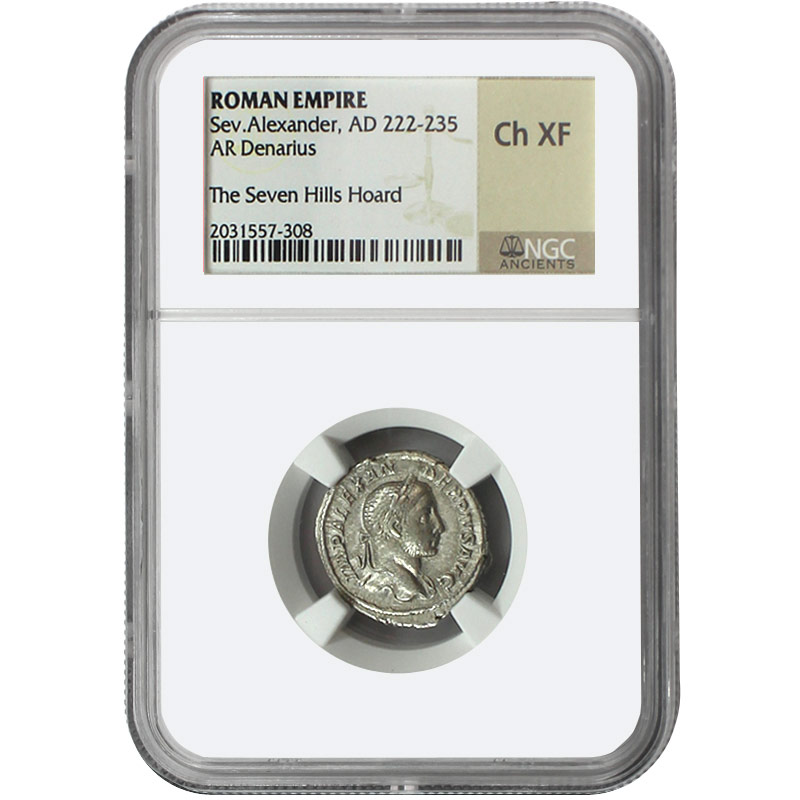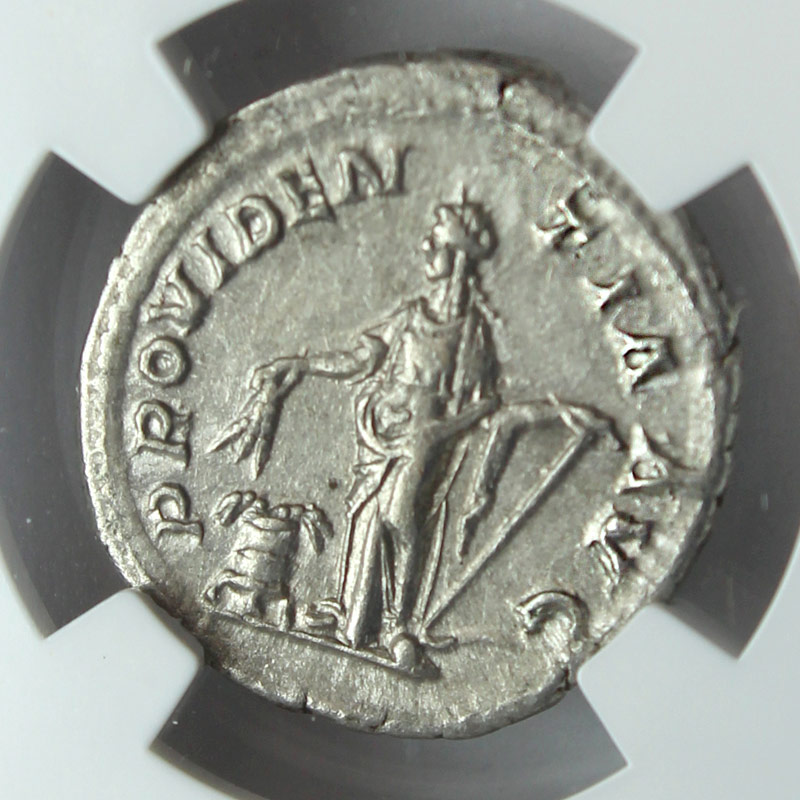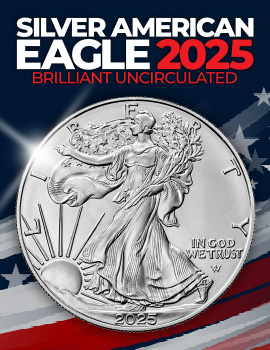
Ancient Roman Silver
The Seven Hills of Rome are located east of the river Tiber and make up the heart of Rome, resting within the walls of the ancient city. Bringing focus to that area recently was the news of a now-famous hoard of more than 7,000 Roman silver coins that were discovered in the region. These coins are thought to have been buried around 250 A.D. (based on the composition of the coins), making this a discovery of great significance! These silver Denarii coins, the Roman Empire’s equivalent of a silver dollar, were hand-struck in silver more than 2,000 years ago. The hoard contained coins struck by several Roman emperors over a period of two centuries or more – and due to the way they were made, no two coins are exactly alike!
The denarius was the standard silver coin of the Roman world from about 211 B.C. up through the early 240s A.D. – a period of more than 450 years. From the late 40s B.C. onward it was common for denarii to bear the portrait of their issuer (becoming standard practice after the Roman Empire was founded in 27 B.C.). Based on this tradition, each of the denarii coins in The Seven Hills Hoard features a portrait of a member of the ruling family from the time when it was made. Mostly it is of the reigning emperor, but some coins feature the ruler’s wife, a child, a close relative or an heir-apparent. The reverse of the coins features a variety of designs, usually a god, goddess or personification. Many of the designs refer to victory in war, success of the regime or other pro-Roman themes. Inscribed on the obverse is usually the name of the person portrayed, and sometimes their title.
 The dates of the coins of The Seven Hills Hoard of Roman Denarii span from the reigns of the emperor Nero (54-68 A.D.) to the emperor Gordian III (238-244 A.D.). Gordian was the 14-year-old grandson of a deceased rebel whom had revolted against the previous ruler, and he was the last emperor to issue silver denarii in large quantities. The hoard represented a cross-section of coins that would have been in circulation in the mid-3rd Century, including newly-minted issues from the reigning emperor to coins that were about two centuries old (as it was common for coins to remain in circulation for very long periods of time in the ancient world). The Roman Empire had been in decline for the better part of a century and was in great turmoil when the hoard of coins was buried - almost certainly as a measure to prevent their discovery. If indeed the plan was to hide the coins, it worked to perfection as they were just recently uncovered!
The dates of the coins of The Seven Hills Hoard of Roman Denarii span from the reigns of the emperor Nero (54-68 A.D.) to the emperor Gordian III (238-244 A.D.). Gordian was the 14-year-old grandson of a deceased rebel whom had revolted against the previous ruler, and he was the last emperor to issue silver denarii in large quantities. The hoard represented a cross-section of coins that would have been in circulation in the mid-3rd Century, including newly-minted issues from the reigning emperor to coins that were about two centuries old (as it was common for coins to remain in circulation for very long periods of time in the ancient world). The Roman Empire had been in decline for the better part of a century and was in great turmoil when the hoard of coins was buried - almost certainly as a measure to prevent their discovery. If indeed the plan was to hide the coins, it worked to perfection as they were just recently uncovered!
 Many of the silver denarii from The Seven Hills Hoard discovery have been authenticated and certified by third-party grading company NGC (Numismatic Guaranty Corporation). Of course, quantities of coins from this hoard are very limited. So if you desire to add a rare treasure of an ancient coin to your collection, you should not hesitate. A selection of the coins from the hoard are available from SilverTowne, but once they’re gone, they’re gone!
Many of the silver denarii from The Seven Hills Hoard discovery have been authenticated and certified by third-party grading company NGC (Numismatic Guaranty Corporation). Of course, quantities of coins from this hoard are very limited. So if you desire to add a rare treasure of an ancient coin to your collection, you should not hesitate. A selection of the coins from the hoard are available from SilverTowne, but once they’re gone, they’re gone!







